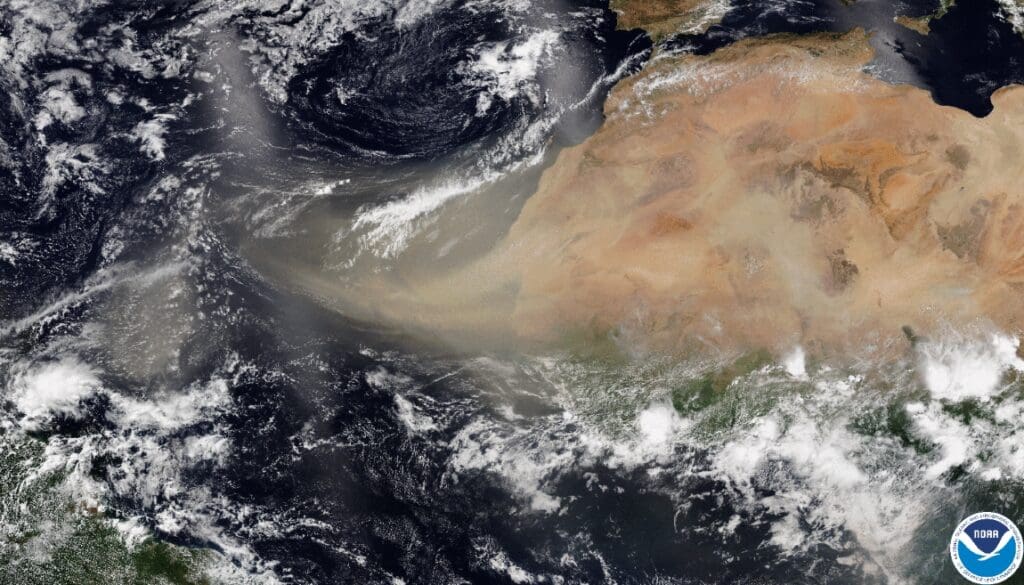Vulnerability of Arctic-Boreal methane emissions to climate change
The rapid warming of the Arctic-Boreal region has led to the concern that large amounts of methane may be released to the atmosphere from its carbon-rich soils, as well as subsea permafrost, amplifying climate change.
In this review, we assess the various sources and sinks of methane from northern high latitudes, in particular those that may be enhanced by permafrost thaw. The largest terrestrial sources of the Arctic-Boreal region are its numerous wetlands, lakes, rivers and streams. However, fires, geological seeps and glacial margins can be locally strong emitters.
In addition, dry upland soils are an important sink of atmospheric methane. We estimate that the net emission of all these landforms and point sources may be as much as 48.7 [13.3–86.9] Tg CH4 yr−1.
The Arctic Ocean is also a net source of methane to the atmosphere, in particular its shallow shelves, but we assess that the marine environment emits a fraction of what is released from the terrestrial domain: 4.9 [0.4–19.4] Tg CH4 yr−1. While it appears unlikely that emissions from the ocean surface to the atmosphere are increasing, now or in the foreseeable future, evidence points towards a modest increase from terrestrial sources over the past decades, in particular wetlands and possibly lakes.
The influence of permafrost thaw on future methane emissions may be strongest through associated changes in the hydrology of the landscape rather than the availability of previously frozen carbon. Although high latitude methane sources are not yet acting as a strong climate feedback, they might play an increasingly important role in the net greenhouse gas balance of the Arctic-Boreal region with continued climate change. – Frontiers
Journal Reference:
Parmentier Frans-Jan W. , Thornton Brett F. , Silyakova Anna , Christensen Torben R., ‘Vulnerability of Arctic-Boreal methane emissions to climate change’, Frontiers in Environmental Science 12 (2024). DOI: 10.3389/fenvs.2024.1460155
Intergovernmental Panel on Climate Change (IPCC) Tier 1 forest biomass estimates from Earth Observation
Aboveground biomass density (AGBD) estimates from Earth Observation (EO) can be presented with the consistency standards mandated by United Nations Framework Convention on Climate Change (UNFCCC).
This article delivers AGBD estimates, in the format of Intergovernmental Panel on Climate Change (IPCC) Tier 1 values for natural forests, sourced from National Aeronautics and Space Administration’s (NASA’s) Global Ecosystem Dynamics Investigation (GEDI) and Ice, Cloud and land Elevation Satellite (ICESat-2), and European Space Agency’s (ESA’s) Climate Change Initiative (CCI).
It also provides the underlying classification used by the IPCC as geospatial layers, delineating global forests by ecozones, continents and status (primary, young (≤20 years) and old secondary (>20 years)). The approaches leverage complementary strengths of various EO-derived datasets that are compiled in an open-science framework through the Multi-mission Algorithm and Analysis Platform (MAAP). This transparency and flexibility enables the adoption of any new incoming datasets in the framework in the future.
The EO-based AGBD estimates are expected to be an independent contribution to the IPCC Emission Factors Database in support of UNFCCC processes, and the forest classification expected to support the generation of other policy-relevant datasets while reflecting ongoing shifts in global forests with climate change. – Scientific Data
Journal Reference:
Hunka, N., Duncanson, L., Armston, J. et al. ‘Intergovernmental Panel on Climate Change (IPCC) Tier 1 forest biomass estimates from Earth Observation’, Scientific Data 11, 1127 (2024). DOI: 10.1038/s41597-024-03930-9
Canopy structure regulates autumn phenology by mediating the microclimate in temperate forests
Autumn phenology serves as a sensitive indicator of temperate forests’ response to climate change and is a key factor influencing forest carbon sequestration. Understanding the mechanisms driving the spatiotemporal variations in autumn phenology is crucial for accurately predicting the responses of temperate forests to climate change and their carbon sink capacity.
Recently, a research team led by Prof. SU Yanjun from the Institute of Botany of the Chinese Academy of Sciences revealed that canopy structure significantly influences local-scale variations in autumn phenology by mediating microclimate conditions.
These findings offer new insights into the mechanisms driving local-scale variation in temperate forest autumn phenology and its response to climate change.
“Current research primarily focuses on the effects of macroclimate on autumn phenology, however, macroclimate does not account for local-scale variations in autumn phenology,” said SU. “Even within the same region, under similar macroclimatic conditions, significant spatial variability can be observed among trees of the same species.”
SU and his team utilized light detection and ranging data and high spatiotemporal resolution imagery to quantify autumn phenology metrics and canopy structure attributes across six representative temperate forest sites. They found a significant and consistent relationship between the canopy structure and autumn phenology, which can be attributed to the influence of canopy structure on microclimate conditions.
Complex canopies delay the start of autumn by reducing light availability within the canopy and enhancing temperature buffering during the growing season, the study showed. Light attenuation decreases photosynthetic activity and carbon uptake, particularly for understory trees, potentially delaying leaf senescence. Additionally, enhanced temperature buffering slows the accumulation of cold temperatures, reduces frost risk, which can further delay leaf senescence.
Integrating the “canopy structure-microclimate-autumn phenology” pathway into existing autumn phenology models significantly improves prediction accuracy. Existing autumn phenology models that do not consider this pathway overestimate the delaying effect of global warming on autumn phenology, according to the study.
These findings emphasize the urgent need to integrate the identified pathway into Earth system and vegetation models, especially considering the asynchronous changes of macroclimate and microclimate conditions. – Chinese Academy of Sciences
Journal Reference:
Wu, X., Niu, C., Liu, X. et al. ‘Canopy structure regulates autumn phenology by mediating the microclimate in temperate forests’, Nature Climate Change (2024). DOI: 10.1038/s41558-024-02164-2
Effects of winter soil warming on crop biomass carbon loss from organic matter degradation
Global warming poses an unprecedented threat to agroecosystems. Although temperature increases are more pronounced during winter than in other seasons, the impact of winter warming on crop biomass carbon has not been elucidated.
Here we integrate global observational data with a decade-long field experiment to uncover a significant negative correlation between winter soil temperature and crop biomass carbon. For every degree Celsius increase in winter soil temperature, straw and grain biomass carbon decreased by 6.6 ( ± 1.7) g kg-1 and 10.2 ( ± 2.3) g kg-1, respectively. This decline is primarily attributed to the loss of soil organic matter and micronutrients induced by warming. Ignoring the adverse effects of winter warming on crop biomass carbon could result in an overestimation of total food production by 4% to 19% under future warming scenarios.
Our research highlights the critical need to incorporate winter warming into agricultural productivity models for more effective climate adaptation strategies. – Nature Communications
Journal Reference:
Ni, H., Hu, H., Zohner, C.M. et al. ‘Effects of winter soil warming on crop biomass carbon loss from organic matter degradation’, Nature Communications 15, 8847 (2024). DOI: 10.1038/s41467-024-53216-2
Assessment of climatic and environmental parameters on fish abundance of an afro-tropical reservoir
This study assessed the impacts of climatic parameters (rainfall and temperature) and environmental variables (transparency, depth, chloride, TS, TSS, TOC) on the abundance of commercially important fish species in Esa-Odo.
The research question was to find out if climatic and environmental factors influence the abundance of fish species in an afro-tropical reservoir. Fish species were collected on a monthly basis for two annual cycles covering both dry and rainy seasons. GIS-based climatic data was used to determine the relationship between climatic conditions and fish species abundance.
Results showed that the highest abundance of fish was recorded during the rainy season, with Oreochromis niloticus being the most dominant species throughout the sampling period. Trend analysis revealed that variations in climate and environmental parameters influenced the abundance of different fish species in the reservoir.
Mann-Kendal analysis indicated that an increase in rainfall led to an increase in reservoir depth, a decrease in transparency levels, and a reduction in temperature, with a Sen’s slope value of -38. Additionally, CCA and correlation matrix results demonstrated that climate and environmental parameters significantly influenced fish species abundance.
The study emphasized the importance of climatic and environmental factors in the abundance of fish species in the reservoir, providing valuable information for future research on fishery resources. Governments and stakeholders were urged to prioritize the conservation and management of the reservoir’s fish population to prevent declines. – Scientific Reports
Journal Reference:
Obayemi, O.E., Komolafe, O.O., Ayodeji, O.A. et al. ‘Assessment of climatic and environmental parameters on fish abundance of an afro-tropical reservoir’, Scientific Reports 14, 23991 (2024). DOI: 10.1038/s41598-024-75181-y
Evening humid-heat maxima near the southern Persian/Arabian Gulf
Extreme humid heat is a major climate hazard for the coastal Arabian Peninsula. However, many of its characteristics, including diurnal and spatial variations, remain incompletely explored.
Here we present evidence from multiple reanalysis and in situ datasets that evening or nighttime daily maxima in extreme wet-bulb temperature and heat index are widespread along the southern Persian/Arabian Gulf coastline and adjacent inland desert, driven principally by sea-breeze-related movements of moist maritime air. This timing runs counter to the general expectation of more intense heat and greater heat-stress risk during daytime hours.
While wet-bulb temperature is one of many metrics relevant for understanding heat hazards, it has featured prominently in recent literature and its values are closer to uncompensable-heat limits in coastal Arabia than anywhere else. Deviations from an afternoon-peak assumption about heat risks are thus of critical importance and heighten the value of improved understanding of extreme-humid-heat meteorology, in this region and in others subject to similar physical processes. – Communications Earth & Environment
Journal Reference:
Raymond, C., Matthews, T. & Tuholske, C. ‘Evening humid-heat maxima near the southern Persian/Arabian Gulf’, Communications Earth & Environment 5, 591 (2024). DOI: 10.1038/s43247-024-01763-3
No universal mathematical model for thermal performance curves across traits and taxonomic groups
In ectotherms, the performance of physiological, ecological and life-history traits universally increases with temperature to a maximum before decreasing again. Identifying the most appropriate thermal performance model for a specific trait type has broad applications, from metabolic modelling at the cellular level to forecasting the effects of climate change on population, ecosystem and disease transmission dynamics.
To date, numerous mathematical models have been designed, but a thorough comparison among them is lacking. In particular, we do not know if certain models consistently outperform others and how factors such as sampling resolution and trait or organismal identity influence model performance.
To fill this knowledge gap, we compile 2,739 thermal performance datasets from diverse traits and taxa, to which we fit a comprehensive set of 83 existing mathematical models. We detect remarkable variation in model performance that is not primarily driven by sampling resolution, trait type, or taxonomic information.
Our results reveal a surprising lack of well-defined scenarios in which certain models are more appropriate than others. To aid researchers in selecting the appropriate set of models for any given dataset or research objective, we derive a classification of the 83 models based on the average similarity of their fits. – Nature Communications
Journal Reference:
Kontopoulos, D..G., Sentis, A., Daufresne, M. et al. ‘No universal mathematical model for thermal performance curves across traits and taxonomic groups’, Nature Communications 15, 8855 (2024). DOI: 10.1038/s41467-024-53046-2
Forecasting urban water demand using different hybrid-based metaheuristic algorithms’ inspire for extracting artificial neural network hyperparameters
This research offers a novel methodology for quantifying water needs by assessing weather variables, applying a combination of data preprocessing approaches, and an artificial neural network (ANN) that integrates using a genetic algorithm enabled particle swarm optimisation (PSOGA) algorithm.
The PSOGA performance was compared with different hybrid-based metaheuristic algorithms’ behaviour, modified PSO, and PSO as benchmarking techniques. Based on the findings, it is possible to enhance the standard of initial data and select optimal predictions that drive urban water demand through effective data processing.
Each model performed adequately in simulating the fundamental dynamics of monthly urban water demand as it relates to meteorological variables, proving that they were all successful. Statistical fitness measures showed that PSOGA-ANN outperformed competing algorithms. – Scientific Reports
Journal Reference:
Zubaidi, S.L., Al-Bugharbee, H., Alattabi, A.W. et al. ‘Forecasting urban water demand using different hybrid-based metaheuristic algorithms’ inspire for extracting artificial neural network hyperparameters’, Scientific Reports 14, 24042 (2024). DOI: 10.1038/s41598-024-73002-w
The characterization, mechanism, predictability, and impacts of the unprecedented 2023 Southeast Asia heatwave
In April and May 2023, Southeast Asia (SEA) encountered an exceptional heatwave. The Continental SEA was hardest hit, where all the countries broke their highest temperature records with measurements exceeding 42 °C, and Thailand set the region’s new record of 49 °C.
This study provides a comprehensive analysis of this event by investigating its spatiotemporal evolution, physical mechanisms, forecast performance, return period, and extensive impacts. The enhanced high-pressure influenced by tropical waves, moisture deficiency and strong land-atmosphere coupling are considered as the key drivers to this extreme heatwave event. The ECMWF exhibited limited forecast skills for the reduced soil moisture and failed to capture the land-atmosphere coupling, leading to a severe underestimation of the heatwave’s intensity.
Although the return period of this heatwave event is 129 years based on the rarity of temperature records, the combination of near-surface drying and soil moisture deficiency that triggered strong positive land-atmosphere feedback and rapid warming was extremely uncommon, with an occurrence probability of just 0.08%.
These analyses underscore the exceptional nature of this unparalleled heatwave event and its underlying physical mechanisms, revealing its broad impacts, including significant health repercussions, a marked increase in wildfires, and diminished agricultural yields. – npj Climate and Atmospheric Science
Journal Reference:
Lyu, Y., Wang, J., Zhi, X. et al. ‘The characterization, mechanism, predictability, and impacts of the unprecedented 2023 Southeast Asia heatwave’, npj Climate and Atmospheric Science 7, 246 (2024). DOI: 10.1038/s41612-024-00797-w
The risk of energy hardship increases with extreme heat and cold in Australia
Climate change is shifting the experience of energy hardship. Here we examine the effect of the intensity, frequency, and duration of temperature extremes on energy hardship, and how this risk is shaped by individual, housing and neighbourhood resiliencies across Australia, using nationally representative data (269,500 observations) on energy hardship linked to temperature records between 2005 and 2021.
Findings suggest that the risk of energy hardship increases with more intense extreme heat and cold, with greater risks for older individuals, lone-person or single-parent households, and rental tenants. These vulnerabilities can be offset by quality housing and renewable energy installations.
Energy hardship risks under moderate and high emissions global warming scenarios are projected to increase by 0.1%−2.6% and 0.6%−3.3% respectively in the long run. Energy hardship will remain a concern despite raising temperatures, especially for colder regions less prepared for heat and populations with individual vulnerabilities and lacking housing and neighbourhood adaptations. – Communications Earth & Environment
Journal Reference:
Li, A., Toll, M. & Bentley, R., ‘The risk of energy hardship increases with extreme heat and cold in Australia’, Communications Earth & Environment 5, 595 (2024). DOI: 10.1038/s43247-024-01729-5
Public agreement with misinformation about wind farms
Misinformation campaigns target wind farms, but levels of agreement with this misinformation among the broader public are unclear.
Across six nationally quota-based samples in the United States, United Kingdom, and Australia (total N = 6008), over a quarter of respondents agree with half or more of contrarian claims about wind farms. Agreement with diverse claims is highly correlated, suggesting an underlying belief system directed at wind farm rejection. Consistent with this, agreement is best predicted (positively) by a conspiracist worldview (i.e., the general tendency to believe in conspiracy theories; explained variance ΔR² = 0.11–0.20) and (negatively) by a pro-ecological worldview (ΔR² = 0.04–0.13).
Exploratory analyses show that agreement with contrarian claims is associated with lower support for pro-wind policies and greater intentions to protest against wind farms. We conclude that wind farm contrarianism is a mainstream phenomenon, rooted in people’s worldviews and that poses a challenge for communicators and institutions committed to accelerating the energy transition. – Nature Communications
Journal Reference:
Winter, K., Hornsey, M.J., Pummerer, L. et al. ‘Public agreement with misinformation about wind farms’, Nature Communications 15, 8888 (2024). DOI: 10.1038/s41467-024-53278-2
Individual attendance data for over 30 years of international climate change talks
The international community has formally negotiated over climate change since 1991. The annual meetings that host these negotiations have seen an ever-growing number of individuals representing countries, international organizations, or non-governmental organizations.
These meetings and their attendees have accordingly become the focal point of international climate change cooperation for both the international community and scholars studying climate change politics. Yet, researchers have been unable to access and analyze comprehensive attendee-level data pertaining to these negotiations in terms of attendees’ names, genders, job titles, delegations, divisions, and affiliations. In applying text-as-data techniques to attendance roster PDFs, we extract and build attendee-level datasets for all annual negotiations held under the United Nations Framework Convention on Climate Change and its precursor, 1991–2023.
These data include original language and English-translated information on 27,470 unique delegations and 310,200 attendees over a 32-year period. Summaries and validations in turn highlight the promise of our data for the study of attendance patterns and characteristics across delegations and over time. – Scientific Data
Journal Reference:
Blinova, D., Emuru, R. & Bagozzi, B.E., ‘Individual attendance data for over 30 years of international climate change talks’, Scientific Data 11, 1134 (2024). DOI: 10.1038/s41597-024-03978-7
The rate of global sea level rise doubled during the past three decades
The rise in globally averaged sea level—or global mean sea level—is one of the most unambiguous indicators of climate change.
Over the past three decades, satellites have provided continuous, accurate measurements of sea level on near-global scales. Here, we show that since satellites began observing sea surface heights in 1993 until the end of 2023, global mean sea level has risen by 111 mm. In addition, the rate of global mean sea level rise over those three decades has increased from ~2.1 mm/year in 1993 to ~4.5 mm/year in 2023.
If this trajectory of sea level rise continues over the next three decades, sea levels will increase by an additional 169 mm globally, comparable to mid-range sea level projections from the IPCC AR6. – Communications Earth & Environment
Journal Reference:
Hamlington, B.D., Bellas-Manley, A., Willis, J.K. et al. ‘The rate of global sea level rise doubled during the past three decades’, Communications Earth & Environment 5, 601 (2024). DOI: 10.1038/s43247-024-01761-5
Other climate articles published this week
A decade of rain exclusion in a Mediterranean forest reveals trade-offs of leaf chemical defenses and drought legacy effects (Laoué, J., Havaux, M., Ksas, B. et al. | DOI: 10.1038/s41598-024-71417-z)
Assessment of CMIP6 models and multi-model averaging for temperature and precipitation over Iran (Azad, N., Ahmadi, A. | DOI: 10.1038/s41598-024-74789-4)
The global distribution and drivers of wood density and their impact on forest carbon stocks (Mo, L., Crowther, T.W., Maynard, D.S. et al. | DOI: 10.1038/s41559-024-02564-9)
First detection of industrial hydrogen emissions using high precision mobile measurements in ambient air (Westra, I.M., Scheeren, H.A., Stroo, F.T. et al. | DOI: 10.1038/s41598-024-76373-2)
Electric vehicles limit equitable access to essential services during blackouts (Essus, Y., Rachunok, B. | DOI: 10.1038/s44333-024-00007-3)
Effects of land use change on runoff depth in the Songnen Plain, China (Lu, Z., Zhang, J., Li, C. et al. | DOI: 10.1038/s41598-024-75469-z)
Sustainable development in African countries: evidence from the impacts of education and poverty ratio (Zhang, X. | DOI: 10.1057/s41599-024-03912-7)
A global assessment of mangrove soil organic carbon sources and implications for blue carbon credit (Zhang, J., Gan, S., Yang, P. et al. | DOI: 10.1038/s41467-024-53413-z)
Involving citizens in monitoring the Kunming–Montreal Global Biodiversity Framework (Danielsen, F., Ali, N., Andrianandrasana, H.T. et al. | DOI: 10.1038/s41893-024-01447-y)
Response of the upper ocean to northeast Pacific atmospheric rivers under climate change (Shields, C.A., Li, H., Castruccio, F.S. et al. | DOI: 10.1038/s43247-024-01774-0)
Enhanced climate change resilience on wheat anther morphology using optimized deep learning techniques (Zahir, A., Ali, Z., Al-Shamayleh, A.S. et al. | DOI: 10.1038/s41598-024-74875-7)
The Climate Data for Adaptation and Vulnerability Assessments and the Spatial Interactions Downscaling Method (de Lima Moraes, A.G., Khoshnood Motlagh, S. | DOI: 10.1038/s41597-024-03995-6)
Warming could shift the phenological responses of benthic microalgae in temperate intertidal zones (Savelli, R., Le Fouest, V., Becker, M. et al. | DOI: 10.1038/s43247-024-01764-2)
Warm Arctic-Cold Eurasia pattern helps predict spring wildfire burned area in West Siberia (Yin, Z., Zhang, Y., He, S. et al. | DOI: 10.1038/s41467-024-53470-4)
The key role of sufficiency for low demand-based carbon neutrality and energy security across Europe (Wiese, F., Taillard, N., Balembois, E. et al. | DOI: 10.1038/s41467-024-53393-0)
Western North Pacific tropical cyclones suppress Maritime Continent rainfall (Li, X., Lu, R., Chen, G. et al. | DOI: 10.1038/s41612-024-00810-2)
Coastal urbanization may indirectly positively impact growth of mangrove forests (Wei, S., Zhang, H., Xu, Z. et al. | DOI: 10.1038/s43247-024-01776-y)
Expanded subsurface ocean anoxia in the Atlantic during the Paleocene-Eocene Thermal Maximum (Yao, W., Kong, T., Wang, X.T. et al. | DOI: 10.1038/s41467-024-53423-x)
Estimating dynamics of dengue disease in Colombo district of Sri Lanka with environmental impact by quantifying the per-capita vector density (Chathurangika, P., Perera, S.S.N. & De Silva, S.A.K. | DOI: 10.1038/s41598-024-76176-5)
Understanding the local implications of climate change: Unpacking the experiences of smallholder farmers in Thulamela Municipality, Vhembe District, Limpopo Province, South Africa (Dumisani Shoko Kori, Walter Musakwa, Clare Kelso | DOI: 10.1371/journal.pclm.0000500)
Featured image credit: kjpargeter | Freepik




